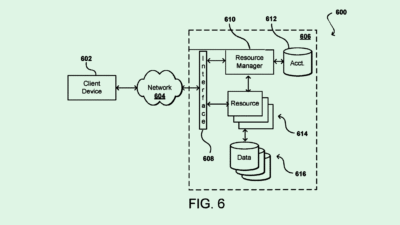Amazon Ups Its AI Infrastructure Ante
The cloud giant is continuing to build out its massive cloud footprint.

Sign up to get cutting-edge insights and deep dives into innovation and technology trends impacting CIOs and IT leaders.
Amazon is the king of cloud – and seems intent on not letting that title go.
In recent weeks, the company has pledged to aggressively expand its data center footprint. In the US, Amazon last week announced plans to invest $10 billion in new data centers in North Carolina, creating roughly 500 jobs in the state. And overseas, it committed to building out facilities in Chile, New Zealand, Saudi Arabia and Taiwan.
Its eye-popping investments “whittle away the people that can’t ante up,” said Trevor Morgan, senior vice president of operations at OpenDrives. “My suspicion is, for them, this is positioning. It forces the fringe players to back off or partner with Amazon.”
As the cloud industry continues to heat up in the face of massive AI demand, continuing to build out infrastructure only makes sense, he added. Though AWS still has a stranglehold on the cloud market, the company has started to lose some ground: It held 29% of the market in the first quarter of this year, compared with 31% a year before, according to CRN. In its most recent earnings report, the company’s cloud revenue fell short of expectations for the third quarter in a row. Competitors like Microsoft and Google, meanwhile, have started to gain ground.
For enterprises, however, increased cloud resources, AI infrastructure and redundancy only bode well, said Morgan. Many may just see this as another reason to stick with AWS as their cloud provider – or to migrate over. The expansion overseas could be especially attractive to multinational enterprises, he noted.
“For enterprises, they just see this as expansion,” he said. “That just gives them more options within the Amazon ecosystem.”
One Less LLM
With its cloud resources, why hasn’t Amazon made a play to join the likes of Google, Meta or OpenAI in creating its own foundational language models? It’s likely that the company sees more benefit in being a “peripheral player,” said Morgan.
- Large language models are expensive to build, he explained. And with adoption still in the early days, seeing significant return on that investment may take longer than Amazon is willing to wait.
- Providing its cloud infrastructure as a foundation to build these models, however, has become a far more lucrative business for the tech giant.
- “(Amazon’s) outcomes probably aren’t fully actualized by coming up with a competing language model,” said Morgan.
Plus, when it comes to the “build or buy” equation, it’s likely the company sees more benefit in AI partnerships, such as its longstanding partnership and $4 billion investment in Anthropic, rather than taking the DIY approach, said Morgan.
“For them, partnering or leveraging somebody else’s model, and building out the infrastructure, the marketplace and the things around that, is probably where they’re going to get their return on investment,” he said.











